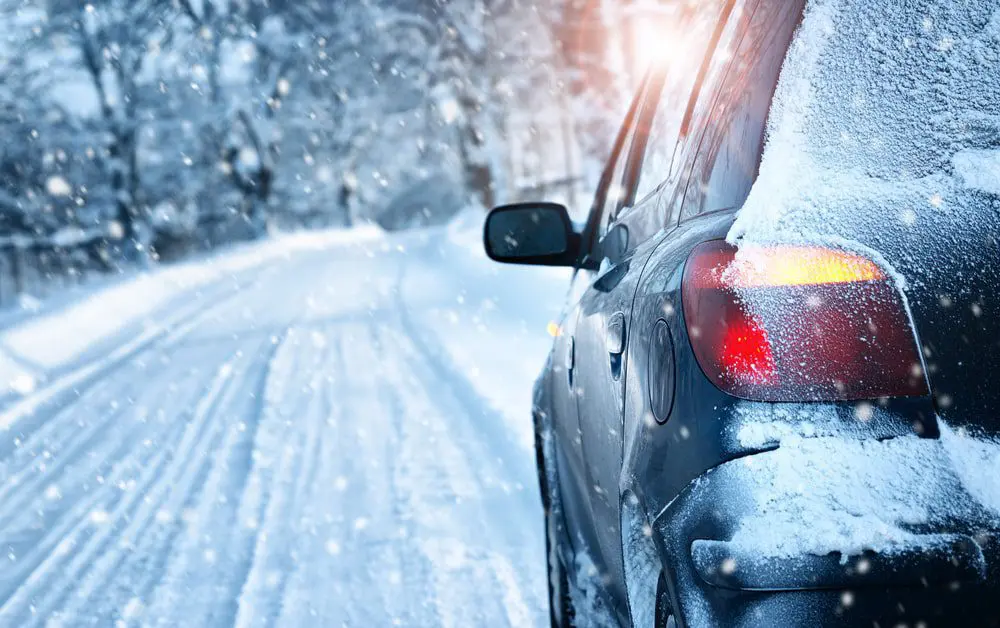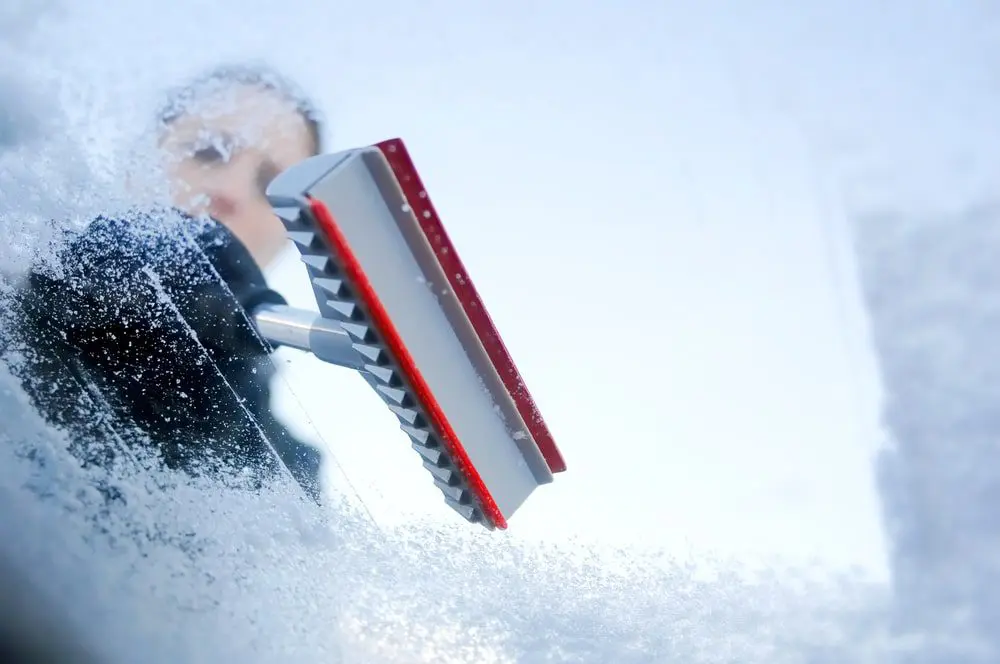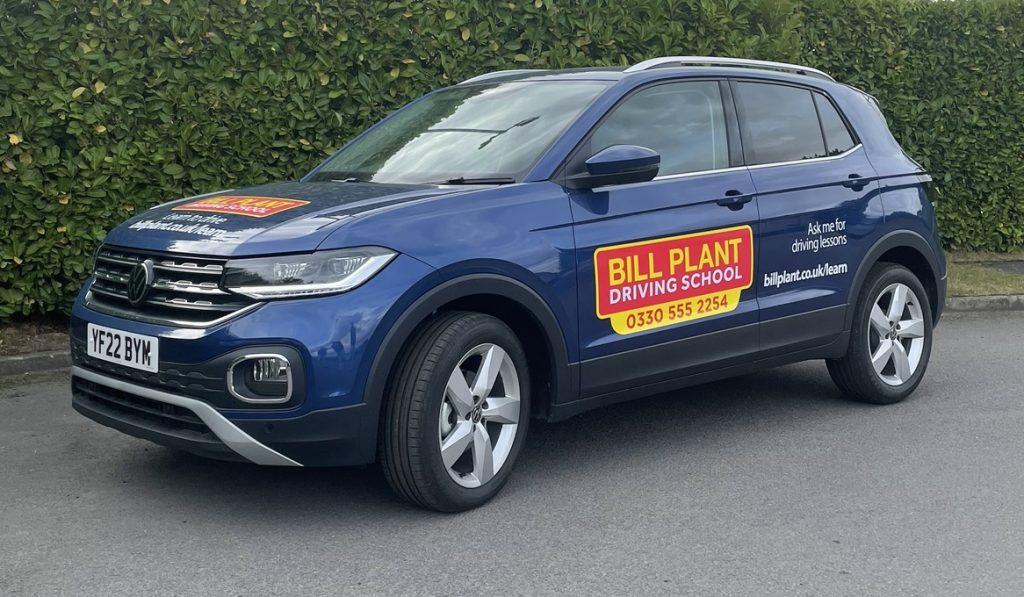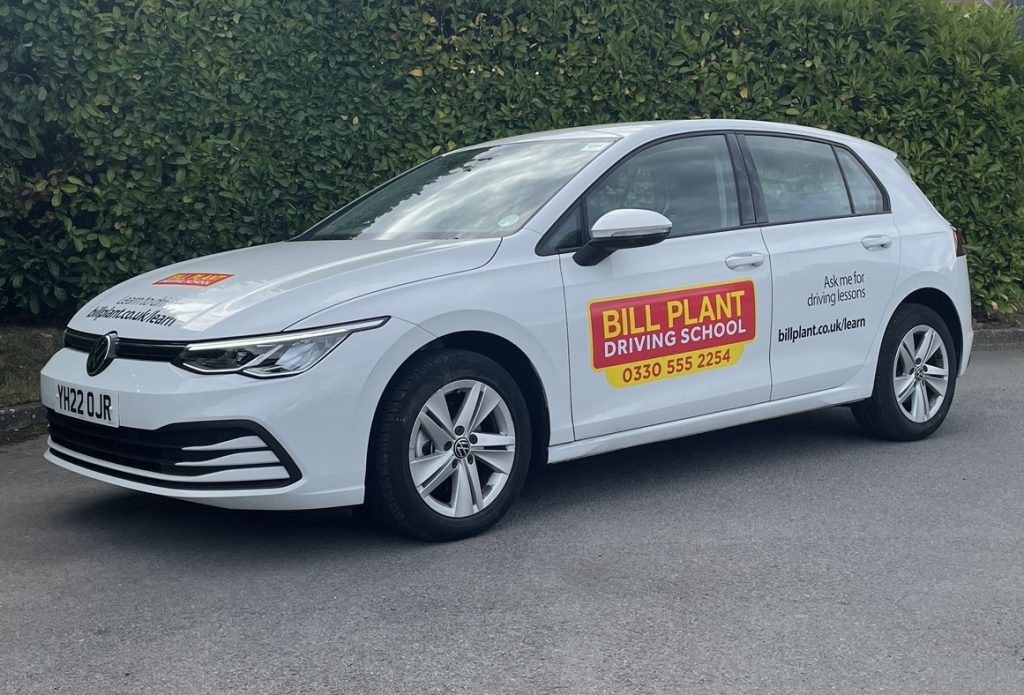
There is no denying that snowy conditions can be a real driving challenge. This is why it is essential to make sure you prepare effectively before your journey.
Below, we will reveal everything you need to know about how to drive in snow, from preparing your car with winter tyres to making sure you avoid wheel spin.
Before you leave for your journey

When driving in winter weather conditions, you always need to make sure that your vehicle is prepared. Let’s take a look at how to prepare your car before you set off on your journey.
Plan your journey carefully
Don’t simply hop in the car and start driving in snow. You need to plan your journey carefully. Check for any traffic updates and use a journey planner to ensure you choose the safest and most efficient route.
Remove any snow from your vehicle
If you have fluffy snow on your car, use a brush with plastic bristles to clear your windows. You can follow this with a light scrape from an ice scraper if needed.
You may need to use a push broom for heavy snow. However, you should never use a snow shovel, as you could damage your vehicle.
De-ice your windscreen
You won’t be able to start driving until you have de-iced your windscreen. You can purchase a de-icer or use a mixture of one-third water mixed with two-thirds of rubbing alcohol.
Test your wipers
Make sure that any auto wiper feature is turned off before you switch on the ignition, as this could result in blowing the wiper control fuse should they be frozen to the screen.
You need to make sure your wipers are in good working order so you can clean your windscreen properly while driving.
Check your tyres
Make sure your tyres have sufficient tread. Poor tyres are not going to grip when driving in snow and ice.
The minimum legal limit for tyre tread is 1.6 mm. However, when driving in the winter, a minimum of 3 mm of tread is recommended.
You may want to consider switching to winter tyres with a deeper tread if you live in an area that regularly gets a lot of snow. Winter tyres have a higher content of silica, which provides you with improved grip in the wet and cold.
In temperatures below 7°C, winter tyres perform much better. They can improve your stopping distances by up to 11 metres in icy conditions.
If the conditions are very bad, you may want to think about using snow chains or snow socks.
Make sure you have enough fuel
It is never a good idea to start driving in snow with minimal fuel in your tank. Make sure you have more than enough fuel for your journey, keeping in mind that you may end up getting stuck and need to keep warm.
Make use of a high-quality screen wash
You also need a high-quality screen wash that will protect down to a minimum of -35°C to stop the water from freezing.
If you don’t, your windscreen wipers may end up being useless in extreme weather conditions.
Pack for the worst-case scenario
There have been many situations whereby the weather has ended up being a lot worse than reported on the news. This is why you need to be prepared for every possibility.
Make sure your car is equipped with all of the following:
- A square of carpet (to put under your rear wheels should you get stuck in the snow)
- A spade
- Some jump leads
- A warning triangle
- A first aid kit
- A map
- A phone charger
- A shovel
- A blanket
- An ice scraper
- Some de-icer
- Spare screenwash
- A drink
- Some food
- A Hi-Vis vest
- A torch
- A demisting pad.
Ensure your mobile is fully charged
Make sure you fully charge your mobile phone before driving. You should also have the number for your breakdown cover provider stored in your contacts.
Wear footwear that is both comfortable and dry
Last but not least, make sure you wear comfortable, warm, and appropriate footwear when driving in the snow.
Here are 12 tips on how to drive in snow and ice
Now that you know how to prepare your car for heavy snow, we are going to take a look at how to master driving in these conditions.
1. Take it easy on the throttle
The first of our tips for driving in the snow is to make sure that you are gentle on the throttle. Avoid any harsh acceleration, as this is likely to result in wheel spin.
2. Move off in second gear
Moving off in second gear is important, as this will help to reduce wheel slip. Some vehicles have a winter mode, which will do the same job, so it is worth checking whether your car has this function.
3. Braking
You should be using your brakes gently when driving in the snow. Of course, it is best to avoid breaking as much as possible. However, when you need to do so, also brake in a gentle manner.
To slow down, we recommend using engine braking through the gears. Simply touch the brake pedal lightly to show your brake lights to the cars behind.
4. Recommended stopping distance
When driving in poor weather conditions, it is vital to remember that your vehicle’s stopping distance will be longer.
Furthermore, if snow is heavily falling, your visibility will be reduced. You need to drive slower and give yourself more time to react.
Also, your braking distances can be doubled when driving in wet conditions. However, when driving on ice or snow, it can increase by at least ten times, so you need to keep this in mind when driving.
5. Going downhill
When going downhill, use a low gear and try to make sure you do not brake unless it is a necessity. Be sure to leave plenty of space between your car and the vehicle in front.
6. Use your dipped headlights
You need to use your dipped headlights when you are driving in snow. Daytime running lights will not be sufficient, as they do not always put lights on the back of your vehicle.
7. How to drive uphill in the snow
Leave plenty of room in front of you when driving uphill, as this will enable you to maintain a constant speed without needing to change gear.
8. If your car skids
Should you encounter a skid, steer into it gently. For example, if the rear of your vehicle slides to the right, steer to the right.
Do not stamp your foot on the brakes or take your hands off the steering wheel.
9. As you approach a bend
If you are coming up to a bend, brake before you begin turning the steering wheel. Should your vehicle lose grip, try not to panic. The important thing here is to take your foot off the accelerator and be sure that your wheels point in the direction you want to go.
10. Use your fog lights
If visibility drops below 100m, it is advisable to use your fog lights. This is the specified distance from the Highway Code, and it approximately equates to the length of a football pitch.
11. Hitting black ice
Black ice is a thin layer of ice on the road’s surface, which is typically transparent. It is caused by rain falling onto a frozen surface.
Because of this, black ice will typically form on areas of the road that do not get a lot of sun, for example, overpasses, tunnels, and tree-lined routes.
It is challenging for drivers to spot black ice, so it can be incredibly dangerous. It is vital that you know how to react should you hit some black ice while driving.
If you do hit some black ice, it is essential to keep calm and avoid any aggressive or sudden manoeuvres. Do not hit the brakes but instead fully lift off the accelerator and try to keep steering straight, enabling your vehicle to pass over the ice.
12. Consider your current driving environment
Last but not least, it is always crucial to think about your driving environment, particularly in microclimates that could appear on the road.
A bridge is a good example of a microclimate. Bridges are typically areas where the sun hasn’t come up yet, causing the road to stay icy when the rest of the roads are thawed.
Areas like this tend to be the first to freeze and the last to thaw, which makes them challenging. It is always important to be aware of locations like this so that you can adjust your driving style accordingly and be extra cautious.
How to drive an automatic car in snow?
It is considered more difficult to drive an automatic vehicle in the snow because you won’t have as much input on the vehicle’s controls. However, this is not said to worry you, as you can still drive safely and efficiently during the winter months.
If you are driving an automatic car in the snow, it is important to know your vehicle. Some automatic cars have a winter mode that will adjust the shift pattern of your gearbox.
Older vehicles have a 2 and L on the gearshift. Put your vehicle in 2. Alternatively, if your car has a manual option, select 2nd to pull away. If you do either of these, it will lower your revs, which will ensure your vehicle’s wheels are less likely to spin.
Also, try to make all of your inputs as gentle as possible. For example, always accelerate gently. Make sure you do not stamp on the pedals or pull the steering wheel aggressively.
Can a winter driving course improve your skills?
Yes, if you do not feel confident about driving in icy conditions, it is highly recommended that you speak to your driving instructor about practising in winter driving conditions during your driving lessons.
You will learn how to drive safely in the snow and other winter conditions and how to tackle specific issues, such as low winter sun. This will make you feel a lot more confident when driving in the snow in the future while ensuring you are a lot safer as well.
FAQs
What gear should I drive in snow?
When driving in snowy, cold weather, you should drive in a higher gear, keeping your revs low.
What speed should I drive in snow?
When tackling snowy and icy weather, you are generally advised to go no quicker than 30 mph. Try to keep a steady speed, so you don’t have to brake suddenly.
Is a heavier car better in the snow?
There is some debate about whether or not heavier cars are better in the snow. Having a bigger car with considerable ground clearance is better for winter weather conditions. However, a heavier car means you have more weight to stop, which can take longer.
Does traction control help in the snow?
Traction control can make driving in snow difficult. If you’re going to be driving over snow-covered roads, we highly recommend that you keep this off.
Final thoughts
There is no denying that driving in heavy snow can be a challenge. However, if you follow the winter driving tips for new drivers that we have provided above, you can make sure you keep yourself and everyone else on the road safe.

